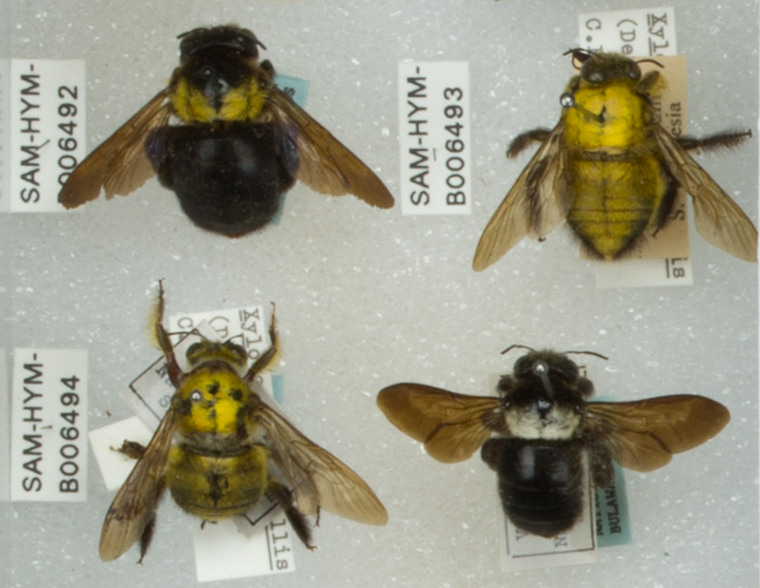 |
Xylocopa flavicollis (De Geer)
Apis
flavicollis De Geer,
1778. Holotype in NHRS. Type locality: South Africa. |
Distribution
|
Botswana,
Cameroun, Democratic Republic of the Congo, Ethiopia, Kenya, Mozambique,
Namibia, Somalia, South Africa, Tanzania, Uganda, Zimbabwe. |
Biology
|
Carpenter bees bore tunnels into wood to construct a
nest, which they provision with a mixture of pollen and nectar
sculptured into an elongate shape. This acts as a food source for their
developing larvae. A number of partitions (each containing a single
larva) may be constructed within the tunnel, the partitions are made out
of chewed wood.
Recorded on
flowers of: Blepharis capensis, Combretum sp., Foeniculum vulgare,
Grewia occidentalis, Lycium sp., Medicago sativa, Petrea sp., Salvia
sp., Sesbania bispinosa, Solanum sp. Nests in: Jacaranda sp.,
Oleander sp., Pinus sp. Parasite: Coelopencyrtus callainus,
Coelopencyrtus taylori, Dinogamasus productus, Dinogamasus oudemansi
(Eardley & Urban, 2010). |
References
|
Eardley, C.D. 1983.
A taxonomic revision of the genus
Xylocopa Latreille (Hymenoptera:
Anthophoridae) in southern Africa.
Entomology Memoir,
Department of Agriculture,
Republic of South Africa
58: 67pp.
Eardley, C & Urban, R. 2010. Catalogue
of Afrotropical bees (Hymenoptera: Apoidea: Apiformes).
Zootaxa 2455: 1-548.
Michener, C.D. 2000. The Bees of the World. Johns Hopkins
University Press. 953 pp. |
Credits
|
Photographs of specimens in SAMC © Iziko Museums of South Africa.
Map illustration © Simon van Noort (Iziko Museums of South Africa).
|
|